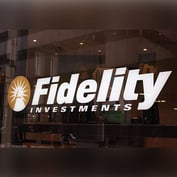What You Need to Know
- Performance reporting often is ignored as part of an effective communication and technology strategy with clients.
- Content added to reports should be representative of the advisor’s personal management philosophy.
- Age, income, net worth, job, investment experience and other factors play a key role in how advisors communicate with and serve clients.
The client review process with wealth advisors has evolved (and for good reasons) into more than just a discussion around numbers. Advisors have been smart to adopt a holistic approach to considering the big-picture goals, needs and concerns of their clients, while also educating clients on topics such as risk, diversification, and how behavior such as emotions play a role in investment decisions.
Nonetheless, every client still needs the “How am I doing?” update on their managed assets.
Performance reporting often is ignored as part of an effective communication and technology strategy with clients. Many advisors have become accustomed to using the same mundane, colorless, canned reports that fail to impress their clients.
With the help of many of today’s innovative technology solutions, savvy RIAs can create customized performance reports configured to tell their story. However, many RIAs fall short of delivering effective reporting to their clients.
Here are some tips to help advisory firms build brand equity and strengthen client relationships through a well-developed report construction and communication strategy:
1. Think like a marketer.
Just putting the firm logo at the top of the page is not going to cut it. Advisory firms need to carefully examine everything: fonts and sizing, color scheme, headers/footers, layout orientation, position of reporting data elements, spacing, cover page design, etc.
The “look and feel” is very important to show professionalism and appeal to the client with an attractive and easy to follow layout. Additionally, consider how the reports look, not only on paper, but when delivered digitally as well. Any report should appear just as clean on a cell phone as it does on a desktop or tablet.
2. Consider the story you are telling your client.
Content added to reports should be representative of the advisor’s personal management philosophy.









 April 07, 2022 at 02:53 PM
April 07, 2022 at 02:53 PM











